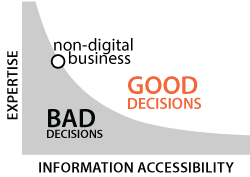
To err is human. This universal law states that there exists a finite probability that a decision made by any person - the engineer, the manager, or the CEO - may be wrong. In a megaproject due to its size even a small mistake may have dire consequences.
Project auditing (PA) is intended to mitigate this problem. PA is about go/nogo approval of a project team decision.
There are two types of PA - internal and external. Although the internal one is considered an inherent part of the project engineering and management, in practice, companies do not allocate a budget for hiring PA-dedicated staff and skip PA entirely. It makes sense if the project is a copy of a plant in operation or its slight modification. Unfortunately, its definition is predominately optimistic.
The entity conducting external PA - the auditing company - shall represent the client or a bank financing the project and be independent of the project's main contractor - the engineering company.
The scope of an external PA (EPA) is substantially less than that of an internal one and is risk-source-oriented. It is not about offering stewardship or advice as many experts wish it to be.
In theory, EPA shall pay equal attention to all the project phases - engineering, management, procurement, etc. Therefore, a collaboration between the main contractor and the auditing company shall be established before actual project execution.
In practice, three factors make EPA a wish to be true.
- Timely project information - the foundation for collaboration - is not accessible to auditing companies.
- Auditing companies cannot maintain hands-on experience in the megaproject execution - a critical part of the domain expertise. This phenomenon - an expertise decay - is well-known in the industry.
- EPA is expensive and time-consuming, its negative impact on the project schedule cannot be disregarded.
To better decisions, we may hire better experts or make information more accessible. Textbooks on project management all miss on the latter - good news for auditing companies advertising themselves as top-notch experts. (They normally sell risk mitigation, its quantification being not in the scope.) A fair trade of subjectivity for objectivity?
If conventional project management finds PA moot, may digitization discard it entirely? This question is treacherous as we cannot select digitization routes based on conventional beliefs. All the water companies are caught in this trap.
As digitization moves the business from a computer-aided to a human-aided one, the human being becomes the weakest link of the business. PA makes this link much stronger.
Digitization reinstates PA in its rights.
- It adds PA to the project validation framework
- It guarantees ultimate information transparency and equal access to it for all stakeholders - a condition for boosting the PA expertise.
- It enhances the project management theory with PA implementation - how PA should be interwoven into the project to eliminate its impact on the project schedule.
- It prioritizes the PA tasks based on the project risk quantification explained in the previous article.
- It narrows down the auditing area immeasurably.
- PA team assignments editor
- PA team decision hierarchy builder
- Project object/task approval path editor
- Outstanding issues tracker
- Approval metrics viewer
